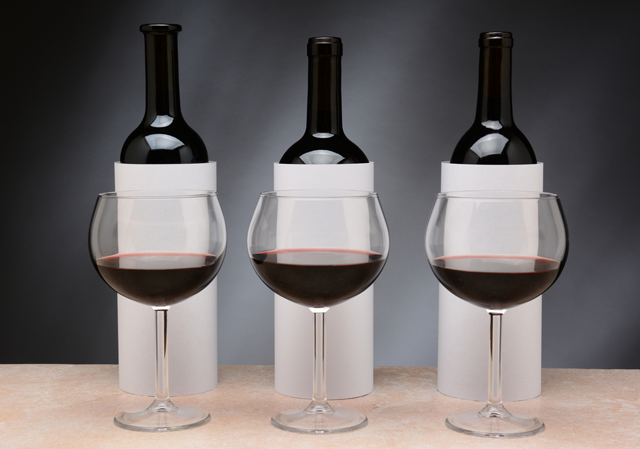Blind Tasting: The Kind Of Party Where You Actually Learn Something
By John Lenart in Food on Jul 18, 2014 6:00PM
Although we like to believe we can be objective when tasting wine, study after study shows we're not capable of ignoring information, and those tidbits of advice cloud our judgment when assessing wine. I mean, it’s hard to taste, say, a $100-plus Grand Cru Burgundy or a $4 bottle of merlot and not have some preconceived ideas about each. The only way to fairly assess a wine is to taste it blind. I'm not talking about wearing a blindfold, but rather, just having no knowledge about the wine before tasting it.
Now, don’t try this every time you taste wine. Aside from being impractical, the information on wine labels or tasting notes are the best ways for you to make an informed decision about purchasing wine. But blind tasting, on occasion, can be very educational and a lot of fun.
It's pretty simple to set up a blind tasting. Just invite a group of friends over and have everyone bring a bottle of wine wrapped in a brown paper bag or wrapped in aluminum foil. You’ll also need wine glasses, decanters, spit buckets, water and crackers to help clear the palate between wines, as well as pens and paper if you want to take notes
Once everyone arrives label each wine “A, B, C” and so on, with a tag, Post-it Note, or even a piece of tape. Then pop the corks and get to tasting. From here, there are a variety of ways you can go. You can be super casual about it and just taste to see which wine you like best, or you can go all Court of Master Sommeliers and try to guess very specific things about each wine; like the varietal, country of origin, appellation, vintage, and if you're really good, the producer. Good luck with that last one.
A group of friends and I do just that once a month. Prior to the tasting we decide who will bring red wine and who will bring white. First we taste the whites, then the reds. We taste in this order because white wines tend to have more delicate flavor profiles than reds. We do a lot of swirling, sniffing and slurping. With practice you can actually get quite good at identifying a wine blind.
We've developed a score sheet that each taster fills out. Five points are given for correctly determining the varietal, three points for the country of origin, two points for the state or region, two points for the vintage, one point for the sub-region, and one point for the producer.
We taste the wines one at a time and when we’re finished we reveal each wine and tabulate our scores. Our typical winning score for six wines is somewhere in the 30s. Now sure, we each know which exact wine we brought, but you’d be surprised at how often each of us completely misses the wine we brought. (We call that whiffing.) Kind of like striking out in baseball when you know what pitch is coming. On the flip side, it’s really cool to nail all the details, short of the producer, about a wine you didn’t bring in a blind tasting. It’s kind of like doing a magic trick.
We like to joke that these tastings are a good way to find out how much we don’t know about wine. After we’re done tasting, we discuss what qualities of each wine led us our final answers. Our tasting “season” sort of culminates at the annual Geja’s Wine Tasting Contest, held early each November. It’s a really fun way to taste four white and four red wines and see how you stack up. There are two divisions, one for industry professionals and one for amateurs.
November is a long way off, so in the meantime, set up your own blind tasting. They’re a lot of fun and a great way to learn what you like and what you don’t in an objective setting.
